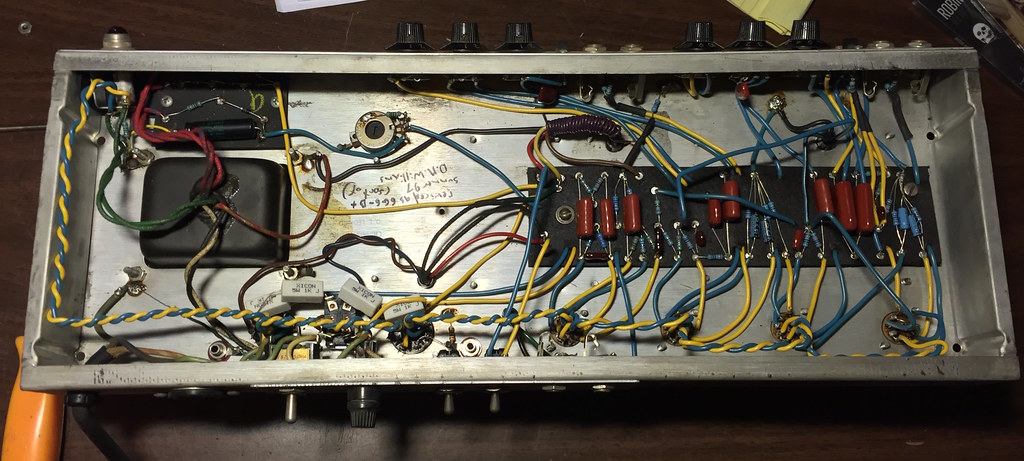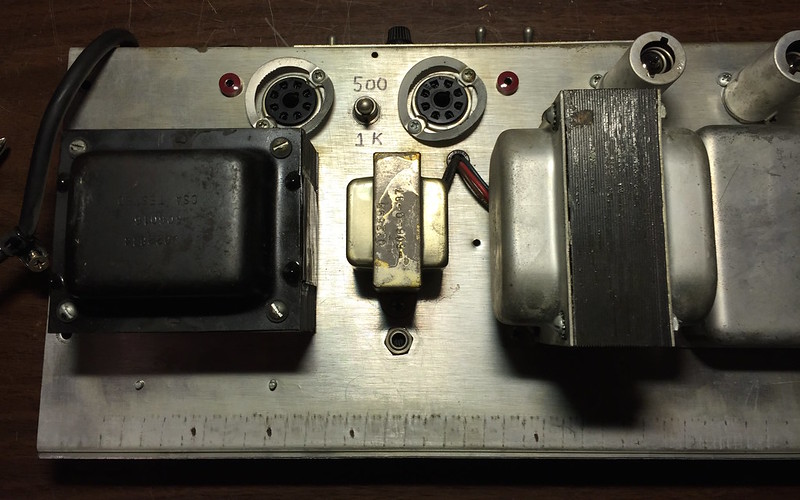|
|
Post by unit7 on Dec 12, 2016 17:11:03 GMT -6
Hi!
Just ordered an amp from Marsh Amps. A Princeton clone with 12" speaker and added mid and master volume controls. Unfortunately not available as DIY. The coupling caps are orange drops, but in my goal to make this a great studio amp, I'd like to compare with a couple of other cap brands, so I'm curious if someone have done this without soldering, and perhaps used crocodile clips when testing? Or if there's a better way?
Totally aware that there's lethal voltage in the circuit. I'm not sloppy when dealing with these things.
Grateful for any advice!
|
|
|
|
Post by bowie on Dec 12, 2016 17:17:35 GMT -6
I do this a lot and will often just use clips or, in smaller spaces, just the tension from a partial wrap around a turret. Never do this in a power section or some area that will cause damage or failure if the connection fails. If you hear noise or low gain, the connection needs to be improved. But, generally you can test out coupling caps without soldering.
|
|
|
|
Post by jimwilliams on Dec 13, 2016 10:57:25 GMT -6
Polyprop Orange dot caps are fine for a guitar amp. Some "purists" insist on mylar film and foil. I like Orange dots and Wima FKP-3's. Use silver mica for the treble cap and the brite switch.
|
|
|
|
Post by EmRR on Dec 13, 2016 12:07:13 GMT -6
One extremity would be the oil/paper types, those Russian surplus types are plentiful and cheap still, though I don't get the idea most guitarists like them. They will take you to a fatter slower smearier place, so judicious use could be good for a thin spiky amp. I've never had any problem with the sound of Polyprop Orange Drops in guitar amps.
|
|
|
|
Post by unit7 on Dec 13, 2016 18:58:11 GMT -6
Thanks for the input! I'm sure I'd be perfectly happy with the ODs, but I'm just too curious to not experiment a little. Caps, tubes and speaker. Re caps, some guitar techs say the differences are subliminal, but compared to many of the hair splitting differences for instance between some preamps we discuss here, I think this example is quite obvious, and must be one of the nerdiest shoot out projects I've seen..
Sound examples start 1 minute in
|
|
|
|
Post by jimwilliams on Dec 14, 2016 10:27:03 GMT -6
I use some silver foil, paper in oil caps in my tube mic preamps, very expensive and probably overkill for a guitar amp, but perfect for a quality mic.
When I did the Basson amp designs I used Wima 1200 volt FKP-1's along with Cornel Dublier 500 V silver micas. Dale CMF60 resistors were used. Those amps sound great as they were better built than most pro audio gear.
|
|
|
|
Post by EmRR on Dec 15, 2016 13:22:52 GMT -6
Had to open up this amp last night and replace a late '60's volume pot. Fender Bassman AB165 that I gutted down to chassis/transformers/sockets in 1997, rebuilt as a hybrid 6G6-B (Marshall) and AA864. Changed the weird bias balance back to the adjustable AA864 type, and added 500R/1K grid2 switch for changing between 6L6 and EL34. Also added current meter test points on the power tubes. Home made mounting board. Metal film resistors and metalized polyprop caps, what was available at the time. Sounds great, has replaced a bunch of funky Marshalls that've come in the studio. And. Wait for it. I put USED tubes in it then, and they're still there. EL34's that came out of an Altec 1568 PA/install amp! It sees pretty regular studio action and spent about 2 years doing a weekly 2 hour house gig on bass duty.   |
|